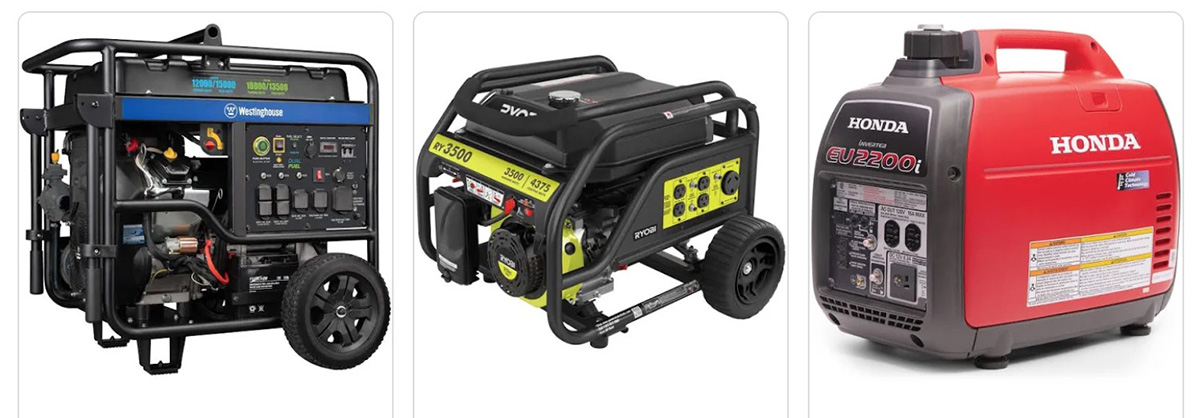Generator Won’t Start? Repair & Troubleshooting Guide

* This site contains affiliate links for which we may be compensated.
Imagine a time without power, and your last resort is your power generator. However, you get to your generator spot, tried to power it on, but the engine doesn’t take off. As this might appear a minor setback, it’s no way much of a problem as you can get a workaround with any issues your power generator has. In this article, we will look at some of the reasons your generator won’t start and the best way to fix them.
Generator Cranks but Won’t Stay Running and Keep Shutting Off
Are you trying to switch your power generator on, and it cranks for a few minutes, then shuts off? For the most part, this occurs due to a clogged fuel valve where fuel can’t flow easily. When this happens, your generator might not power on even if you keep trying to switch it on. In fact, adding more fuel won’t cut it. All you have to do is clean up or replace it with a new fuel valve.
Clogging of carburetor after storing for a long time can also result in this condition. You only have to shut off the fuel valve and open up the carburetor drain in this situation. If it’s clogged with dirt, your best resort is to get a sort of blower or suction tool to suck out the dirt. It’s that simple.
Generator Difficult to Start
Blockage of the air filter with dust or dirt particles is responsible for the difficulty in starting up your generator. To repair, you need to look out for the air filter specific to a generator model. For most power generator models, you will likely find the air filter at the generator front beside the choke. These air filters come in two parts: filter element and filter shell. They help filter off impurities coming through the air.
Your best choice is to get a new air filter and replace the pre-existing one. Do well also to check the spark plug and inspect its condition. Replace with a new one once you find it dirty or damaged. Then test run with an ignition starter or pull starter to see if it works well.
Generator Won’t Start at All
Your generator not starting at all might be due to low fuel or lack of oil. Confirm if there’s still enough fuel in the generator. That way, you can be sure there’s enough fuel gas to power up your generator engine effectively. Then buy extra fuel for the generating plant, fill it up, and restart the generator plant.
Moving further, you need to check the state of your carburetor to ensure it’s unclogged. The clogging of your generator results from stale fuel presence. With stale fuel, you get to have some stickier substances that can clog up your generator and prevent your engine from starting.
Repairing your generator and ensuring it starts on time involves you cleaning the entire fuel container. Then use carburetor cleaner to remove dirt (sticky substances) from the carburetor. You might need a new replacement if your carburetor isn’t effective anymore.
Other Reasons Your Generator Won’t Start

There are other reasons why most power generators won’t start, and this is not limited to:
1. Fault with spark plug: The primary function of a spark plug on your generator is to produce electric current from an ignition system to the combustible fuel chamber. This spark plug helps gear the engine on and is located in different places depending on your generator model. However, as a rule of thumb, you should find the spark plug below the fuel chamber.
2. Dead Battery: This only applies to generators with electric-start batteries. Most times dead battery occurs when you don’t use it for a long time. With this experience, all you need is to use the generator’s pull starter to add power back to the battery. If your generator doesn’t come with a pull starter, then get a third-party battery charger.
3. Wrong setting of Choke lever: A choke lever is a generator unit that helps to provide more fuel on starting a cold engine. Depending on the type and model, the choke lever comes in two positions (open and close). Set the choke lever to close just before you start the generator and open it immediately it warms up. If you place the positional settings on the reverse side, the engine may refuse to pick up.
Generator Preventive Maintenance
To prevent your generator from start-up difficulty, you need to do the following:
• Ensure the oil and air filters are regularly inspected and changed when needed.
• Always check the coolant level for the generator so that you can prevent engine damage with time.
• Look through all air and oil piping for leaks or cracks.
There’s virtually no need to worry about your generator not starting as it only means a component is faulty or isn’t set the right way. Look through this post and see which one applies to you. That way, you can devise a means to power up diagnose your generator and save on mechanical costs. You can also read our how to start your generator for steps by steps and video guide on how to start your generator.







